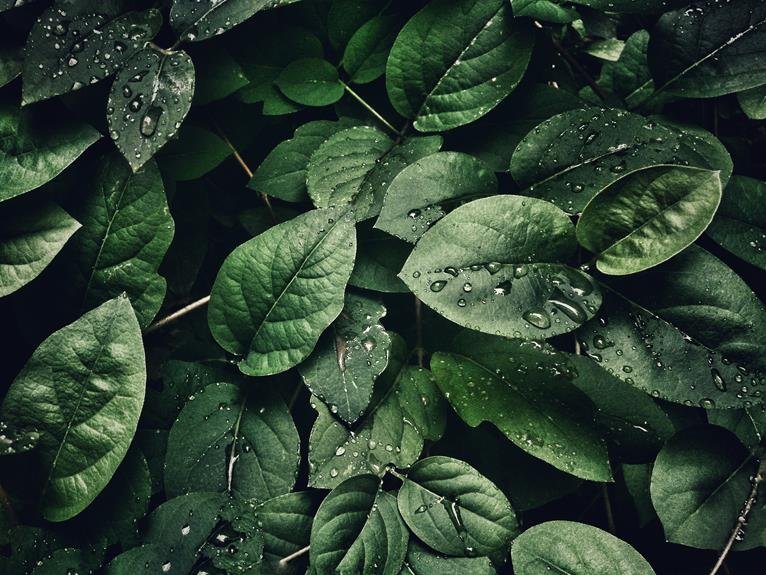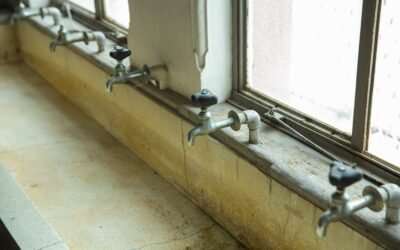Do you wonder if mold can stop growing without moisture? Discover the truth in this informative article.
Mold, typically found in damp environments, relies on moisture for growth. However, under certain conditions, mold spores can remain dormant in dry environments.
Factors such as temperature, humidity, and food sources can influence mold growth even in the absence of moisture. Understanding these factors is crucial for preventing mold growth in dry areas.
Key Takeaways
- Mold requires moisture to grow and thrive in homes.
- Mold spores become dormant in dry environments.
- Mold spores can remain viable for months or even years in a dormant state.
- Mold cannot survive or thrive without moisture.
The Importance of Moisture for Mold Growth
Without moisture, mold won't be able to grow and thrive in your home. Moisture is a crucial factor in the development and sustenance of mold.
Mold spores are naturally present in the air, but they require a moist environment to germinate and proliferate. When moisture levels rise in your home, whether due to a leak, high humidity, or water damage, mold spores find the conditions favorable to begin growing.
Moisture acts as a catalyst, triggering the growth cycle of mold. Once mold spores come into contact with moisture, they absorb it and begin to expand, forming a network of filaments called hyphae.
These hyphae extend and branch out, creating a visible mold colony. The mold colony will continue to grow and release more spores into the air, which can lead to further contamination.
Therefore, it's crucial to address any moisture issues promptly to prevent mold growth and potential health hazards. Regularly inspecting and maintaining your home, promptly fixing any water leaks, and keeping humidity levels under control are essential steps in preventing mold growth.
How Mold Spores React to Dry Environments
To understand how mold spores behave in dry environments, you need to consider their reaction to a lack of moisture. When the environment becomes dry, mold spores enter a state of dormancy. This means that they become inactive and stop growing. However, it's important to note that mold spores are incredibly resilient and can survive for long periods of time in dry conditions. They've the ability to go into a dormant state, waiting for the right conditions to return to their active state and resume growth.
During dormancy, mold spores can withstand extreme temperatures and low humidity levels. They can remain viable for months or even years in this state. When moisture becomes available again, whether from a leak or high humidity, the spores will reactivate and begin to grow. This is why it's crucial to address any sources of moisture in your environment to prevent mold growth.
It's important to note that while mold spores may not grow in dry environments, they can still be present and pose a health risk. When disturbed, dormant spores can become airborne and be inhaled, potentially causing respiratory issues and allergies. Therefore, it's always recommended to address any mold issues promptly, even if the environment seems dry.
Regular maintenance and moisture control are key to preventing mold growth and ensuring a healthy living environment.
Factors That Can Affect Mold Growth in the Absence of Moisture
You can still encounter mold growth, even in the absence of moisture, depending on certain factors. Mold requires moisture to grow, but there are other elements that can contribute to its growth even when there's no visible source of water. Here are three key factors that can affect mold growth in the absence of moisture:
- Humidity: Mold can thrive in environments with high humidity levels. If the air in your home is consistently humid, it can create the perfect conditions for mold growth, even without any obvious water leaks. Humidity can come from various sources, such as poorly ventilated bathrooms or basements, or even from outdoor humidity seeping into your home.
- Condensation: Condensation occurs when warm air comes into contact with a cold surface, causing the moisture in the air to turn into water droplets. This can happen on windows, pipes, or even walls. If condensation is present, it can provide enough moisture for mold to grow, even if there are no other sources of water nearby.
- Organic Materials: Mold requires organic materials to feed on. This can include materials such as wood, drywall, paper, or fabrics. Even without moisture, if these materials are present and there are favorable conditions such as high humidity or condensation, mold can still grow and thrive.
Understanding these factors is crucial in preventing mold growth, even in the absence of moisture. By controlling humidity levels, minimizing condensation, and properly maintaining organic materials in your environment, you can significantly reduce the risk of mold growth.
Can Mold Survive and Thrive Without Any Moisture
Mold can't survive or thrive in the absence of moisture. Mold requires a certain level of humidity or moisture to grow and reproduce. Without moisture, mold spores remain dormant and don't have the necessary conditions to germinate and grow into visible colonies. However, it's important to note that mold spores can still survive in dry conditions, allowing them to become active and develop into mold when moisture becomes available.
Mold spores are incredibly resilient and can withstand harsh environmental conditions, including low humidity. They can remain dormant for extended periods, waiting for the right conditions to grow. Once moisture is present, mold spores can absorb it and begin to germinate. They send out hyphae, or root-like structures, to search for additional moisture and nutrients to support their growth.
It is crucial to address any moisture issues and control humidity levels to prevent mold growth. Even small amounts of moisture, such as condensation or water leaks, can provide enough moisture for mold to thrive. Proper ventilation, moisture barriers, and regular inspection of potential moisture sources can help prevent the development of mold colonies.
Preventing Mold Growth in Dry Areas
Preventing mold growth in dry areas requires proper maintenance and vigilance. Even though mold typically thrives in moist environments, it can still find ways to grow in dry areas if certain conditions are met. To effectively prevent mold growth in dry areas, consider the following:
- Maintain optimal indoor humidity levels: Keep the humidity in your home between 30% and 50%. Use dehumidifiers to remove excess moisture from the air, especially in areas prone to dampness such as basements and bathrooms.
- Proper ventilation: Ensure adequate airflow throughout your home by using exhaust fans in kitchens and bathrooms, opening windows regularly, and installing ventilation systems in enclosed spaces.
- Regular cleaning and inspection: Regularly clean and inspect areas susceptible to mold growth, such as bathrooms, kitchens, and basements. Pay attention to hidden areas like behind appliances, under sinks, and inside ductwork.
By implementing these preventive measures, you can significantly reduce the risk of mold growth in dry areas.
Remember that even in dry environments, mold can still find sources of moisture, such as condensation or water leaks. Therefore, staying vigilant and addressing any signs of dampness promptly is crucial to effectively prevent mold growth in dry areas.
Conclusion
In conclusion, mold requires moisture to grow and thrive. Without moisture, mold spores may become dormant and unable to reproduce. However, it's important to note that some types of mold can survive for extended periods without moisture, waiting for the right conditions to grow again.
Therefore, even in dry areas, it's crucial to take preventive measures to minimize the risk of mold growth and ensure a safe and healthy environment.






0 Comments